Meongseokjip (멍석집)
7.0Km 2021-03-29
7, Donhwamun-ro 11da-gil, Jongno-gu, Seoul
+82-2-766-4620
This restaurant is frequently used as a place for group dinners by office workers. This restaurant's signature menu is grilled pork belly. This Korean dishes restaurant is located in Jongno-gu, Seoul.
Chanyangjip (찬양집)
7.0Km 2021-03-29
5, Donhwamun-ro 11da-gil, Jongno-gu, Seoul
+82-2-743-1384
A popular attraction since the early 1970’s, this rather shabby and hard-to-spot restaurant has attracted many customers with its representative menu item, haemul kalguksu (seafood noodle soup). The soup is delicious and plenty enough for a hearty meal compared to its relatively low price. The noodles are chewy as they are freshly prepared every day and the clam-broth soup is full of flavor. The appearnce of this restaurant may seem old, but it's a recommended spot for a simple and delicious meal.
Seoul Olympic Parktel (서울올림픽파크텔)
7.0Km 2020-04-25
448, Olympic-ro, Songpa-gu, Seoul
+82-2-410-2514
Nestled in Seoul Olympic Park, Seoul Olympic Parktel aims to offer the best service to all visitors. The many guestrooms and amenities like the banquet hall make the hotel suitable for large gatherings, such as interntional conferences and seminars. The business center and fitness club help make Seoul Olympic Parktel stand out as providing the best service.
Kumkang Land Rover - Jongno Branch [Tax Refund Shop] (CL종로지점(금강 랜드로바))
7.0Km 2024-06-27
81, Jongro, Jongno-gu, Seoul
-
Teobangnae (터방내)
7.0Km 2021-03-30
101-7, Heukseok-ro, Dongjak-gu, Seoul
+82-2-813-4434
It is an old store that opened in 1983. This cafe is located in Dongjak-gu, Seoul. The representative menu is coffee.
Hwangudan Altar (환구단)
7.0Km 2020-05-07
112, Sogong-ro, Jung-gu, Seoul
+82-2-3396-5842
Hwangudan Altar, also called Hwandan Altar, refers to an altar complex for the rite of heaven. The rites were first performed in the Goryeo dynasty by King Seongjong in the first month of 983 (2nd year of his reign), but was repeatedly adopted and abolished, and eventually stopped at the start of the Joseon dynasty.
Then in 1456 (2nd year of King Sejo), the practice was temporarily standardized and the rites were performed at Hwangudan Altar again in 1457. However, rites were again abolished in 1464 (10th year of King Sejo). It wasn’t until 1897 (34th year of King Gojong) when the Joseon dynasty was renamed as the Korean Empire and King Gojong ascended to emperor, that the rite was revived.
Now, Hwangungu Shrine and three stone drums stand at the location of the former altar complex. The three stone drums symbolize the instruments used for the rites. The shrine was completed in 1899, two years after the altar was started in 1897. Today, the Hwangungu Shrine still stands within the hotel grounds of the Westin Chosun Hotel.
Naksan Park (낙산공원)
7.0Km 2025-03-13
41 Naksan-gil, Jongno-gu, Seoul
+82-2-743-7985
Naksan Mountain (alt. 125 meters) is one of the four inner mountains of Seoul, and the mountain corresponding to the Azure Dragon of the East. It was also called Naktasan Mountain, which can be translated to Camel Mountain, because the terrain resembled a camel's back. It also had another name, Taraksan Mountain, “tarak” meaning fermented milk, because there was a royal ranch in the area that supplied milk to the palace. After the 1960s, the original appearance of Naksan Mountain disappeared due to apartments and dense housing, and the Seoul Metropolitan Government established a restoration plan. As part of this plan, a park project was carried out, and it opened Naksan Park in July 2002. Currently, Naksan Park has established itself as a resting place for citizens to feel the beautiful atmosphere of Hanyangdoseong, or the Seoul City Wall, and green forests. It has gained much popularity as a place for seeing the most beautiful night view in Seoul.
Gwonchamchi (권참치)
7.0Km 2021-03-24
142, Sadang-ro, 30-gil, Dongjak-gu, Seoul
+82-2-597-7080
This is a place that sells raw tuna fillet with various tuna parts. This Japanese (cuisine) restaurant is located in Dongjak-gu, Seoul. The representative menu is sliced raw tuna.
BENIKEA Hotel Flower (베니키아호텔 플라워)
7.0Km 2021-05-01
269, Wangsan-ro, Dongdaemun-gu, Seoul
+82-2-962-8251
Located approximately 500 meters from Cheongnyangni Station, Benikea Hotel Flower is a great choice for visitors traveling by train. Although the guestrooms are relatively small, they are well equipped with convenient amenities and furnishings. Some rooms even have a computer and a large TV. The hotel is located near significant tourist attractions such as Jongno, Gyeongbokgung Palace, Insa-dong and Cheonggyecheon Stream.
Hyundai Kalguksu (현대칼국수)
7.0Km 2020-06-16
76, Sejong-daero, Jung-gu, Seoul
+82-2-752-9504
Hyundai Kalguksu is a kalguksu (handmade knife-cut noodles) restaurant that has been in the family for two generations (1982). The restaurant is extremely popular among people working at nearby businesses, thanks to the rich flavor of the broth. Anchovies, dried pollack heads, and kelp are simmered for many hours, and then, other ingredients are added: soft noodles and various vegetables including pumpkin, onion, and green onions. The restaurant is famous for the exquisite taste of its kalguksu, as well as for its large servings. Just one bowl is enough to satisfy a starving man, but if you are still hungry, don’t hesitate to ask for more rice or noodles for free. Another unforgettable specialty here is kimchi. You will also be able to enjoy geotjeori (freshly made kimchi) and kkakdugi (sliced white-radish kimchi), which is fermented for about three days.
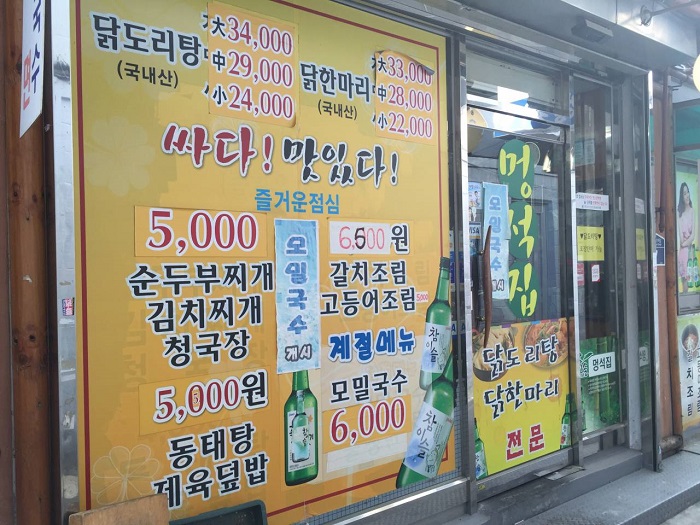

![Kumkang Land Rover - Jongno Branch [Tax Refund Shop] (CL종로지점(금강 랜드로바))](http://tong.visitkorea.or.kr/cms/resource/95/3313995_image2_1.jpg)
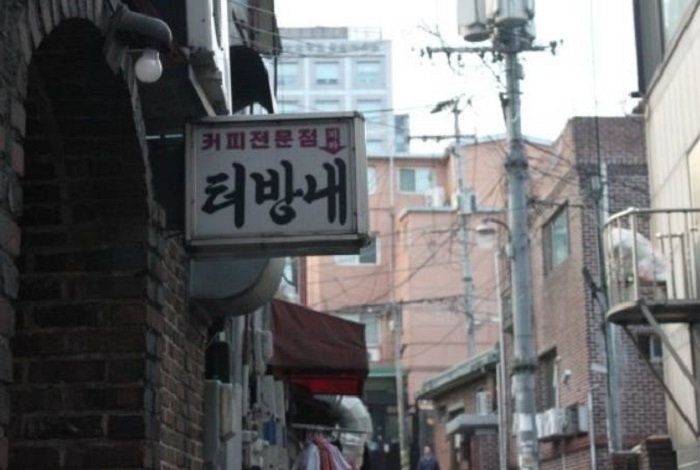
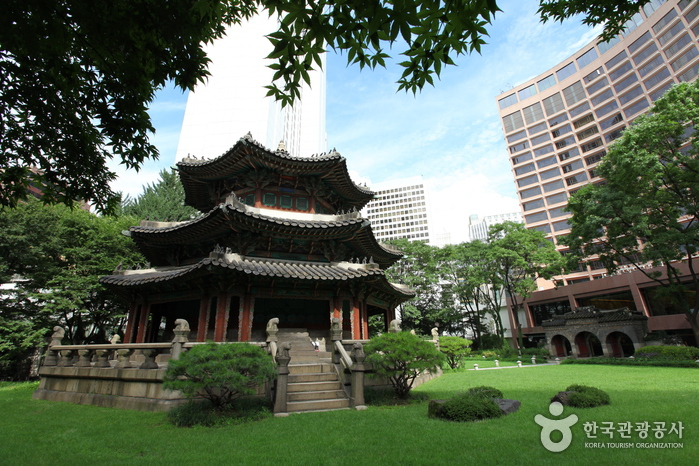
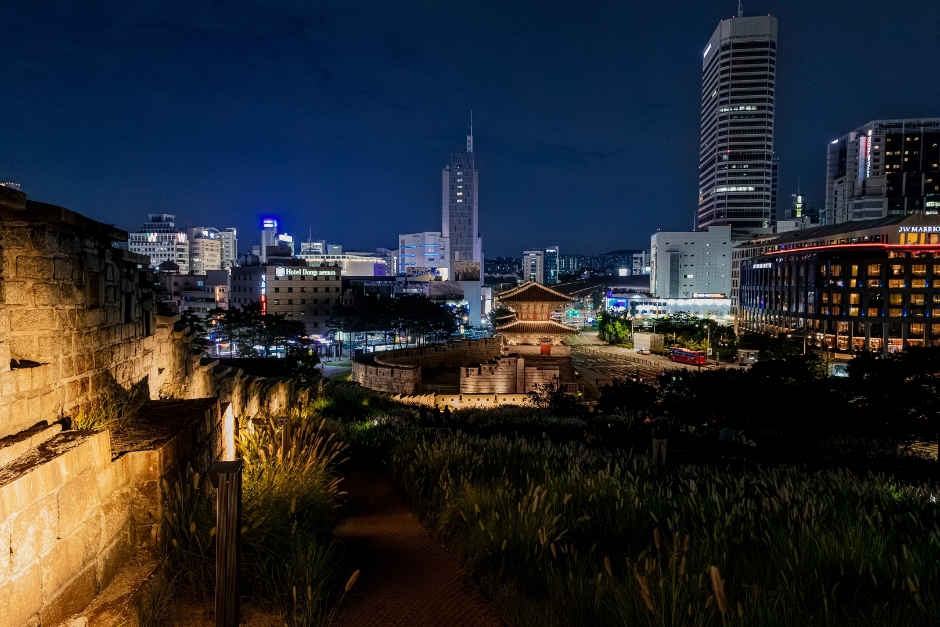
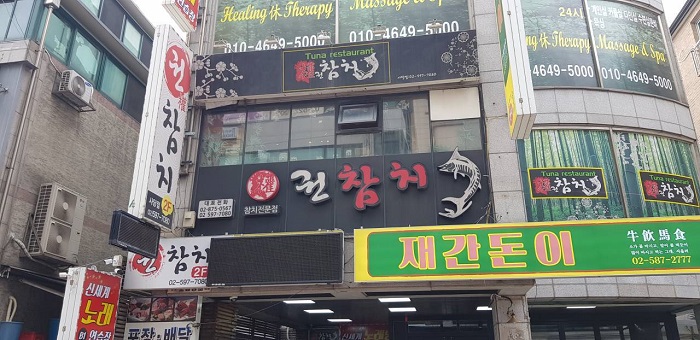
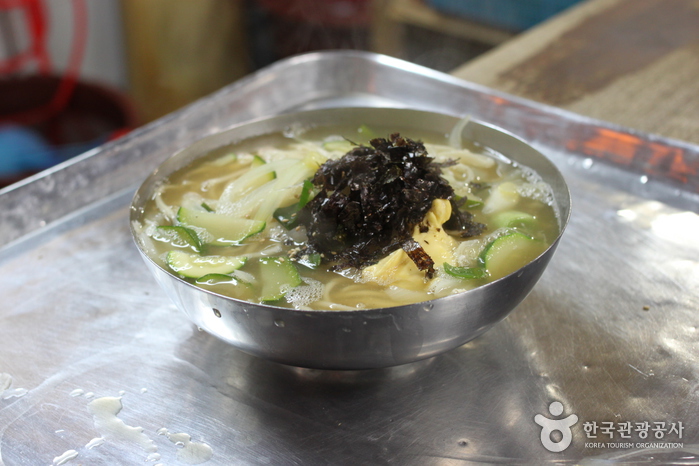
 English
English
 한국어
한국어 日本語
日本語 中文(简体)
中文(简体) Deutsch
Deutsch Français
Français Español
Español Русский
Русский